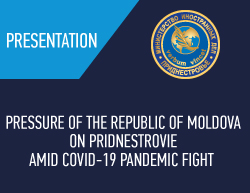The Deputy Minister of Foreign Affairs of the PMR wrote this in his article “The joint Moldovan-Ukrainian control posts on the border with Pridnestrovie and the course of Pridnestrovie toward the Eurasian integration: the current challenges and risks”
At the same time, the diplomat noted that there is not a single document of the negotiation process between Pridnestrovie and Moldova, under which the Pridnestrovian side would express its consent to the establishment of the joint Moldovan-Ukrainian control on its eastern border. He also reminded that in the early 2000s the Republic of Moldova and Ukraine already tried to launch joint customs control at the checkpoint “Kuchurgan”, “however, the Moldovan representatives were fairly quickly driven out from there”.
“To date, the frameworks established by the logic of the negotiation structure, apparently, no longer influence the formation of the strategy of the Republic of Moldova and Ukraine in the dialogue with Pridnestrovie. A paradigm of coercion and pressure was chosen, which is aimed at meeting in an enforced way and outside the negotiations their own aims and objectives not always reasonably and pragmatically built,”- noted the Deputy Minister.
Dmitry Palamarchuk also said that the adoption of the Resolution of the Cabinet of Ministers of Ukraine No. 117, which limits the importation of excise goods through the Ukrainian border crossing points, the introduction of the ban on the movement of Pridnestrovian vehicles across the Moldovan-Ukrainian border and the attempt to organize a joint control at the checkpoint “Kuchurgan” are components of a single strategy of pressure against Pridnestrovie. “It should be assumed that the steps taken today by Moldova and Ukraine fit into the logic of forcing Pridnestrovie to make political concessions by using economic instruments. In fact, the current situation continues the paradigm of economic pressure on Pridnestrovie, realized in the most intensive phase since 2006,” - emphasized the diplomat.








